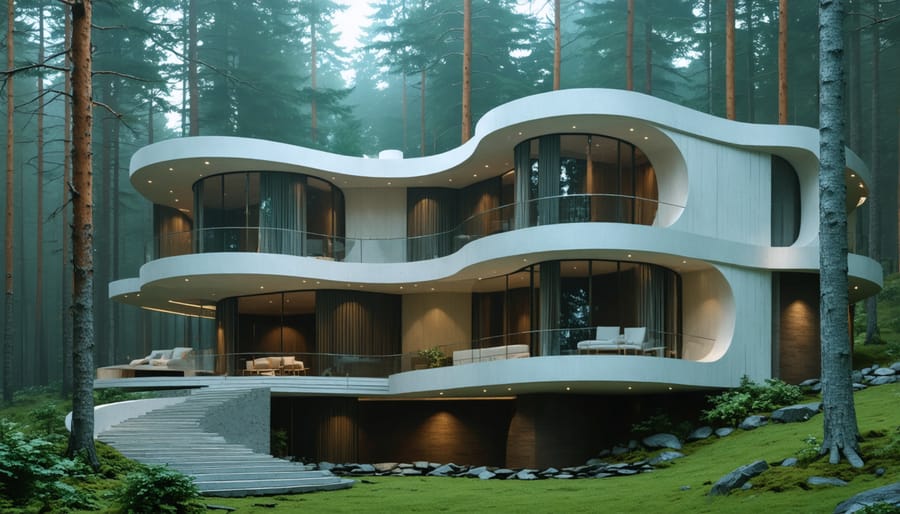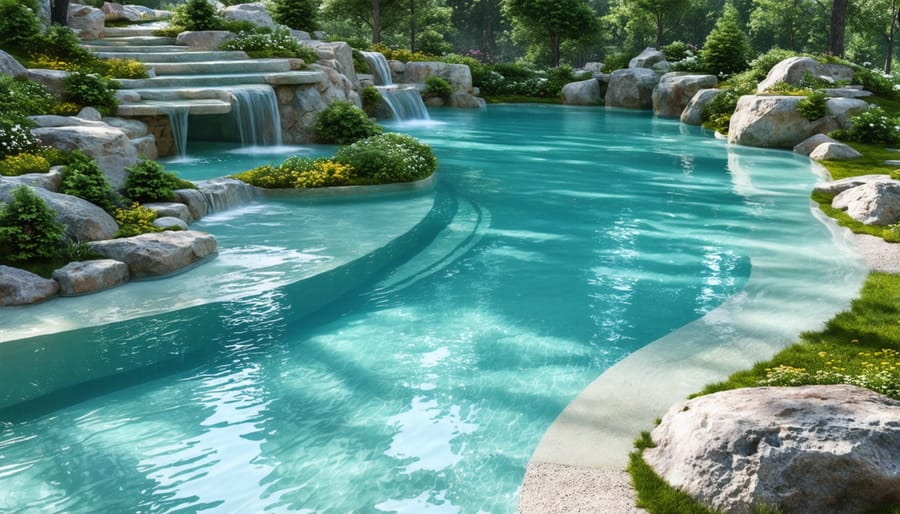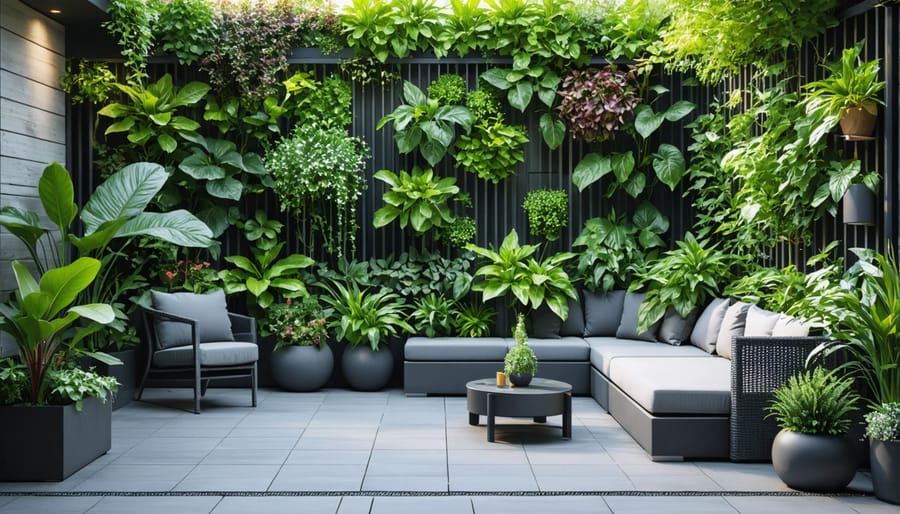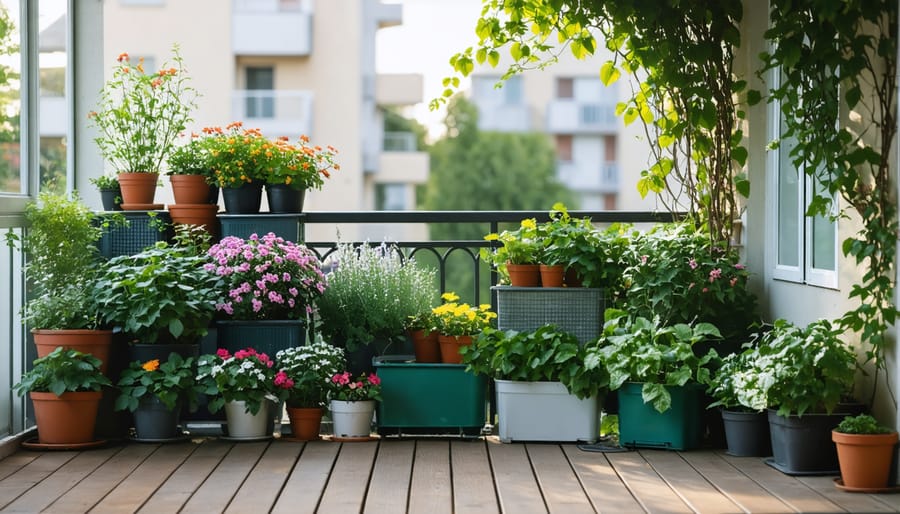Transform your living space into a seamless extension of nature by implementing key natural sanctuary design principles. Create flowing transitions between indoor and outdoor spaces using floor-to-ceiling windows, living walls, and natural material palettes that mirror the surrounding landscape. Position buildings to maximize natural light and ventilation while preserving existing vegetation and topography. Integrate biophilic elements like water features, native plantings, and organic shapes throughout your architecture to foster a deeper connection with the natural world.
Nature-integrated architecture represents more than just aesthetic choices – it’s a fundamental shift in how we approach building design. By blending structural elements with natural systems, we create spaces that are not only visually stunning but also more sustainable, energy-efficient, and psychologically nurturing. This thoughtful fusion of nature and architecture reduces environmental impact while enhancing human wellbeing through improved air quality, natural light exposure, and connection to seasonal rhythms.
Whether you’re planning a new build or renovating an existing space, the principles of nature-integrated design can be adapted to any scale or budget. The key lies in understanding local ecosystems and implementing design solutions that work in harmony with, rather than against, natural processes.
Bringing the Forest to Your Doorstep
Natural Flow and Organic Design
Creating a seamless flow between your home and nature doesn’t have to be complicated. The key lies in understanding how natural elements move and interact, then incorporating these patterns into your design. Think of how a river curves naturally or how plants grow in organic clusters – these are the patterns we want to mirror in our architectural choices.
Start by observing the natural landscape around your property. Notice how the ground slopes, where the sun hits throughout the day, and how wind moves through the space. Use these observations to inform your design decisions. For example, curved pathways feel more natural than straight lines, and stepped terraces can follow the natural contours of your land.
Consider using materials that echo the surrounding environment. If you’re in a wooded area, incorporate natural wood elements in your structures. In rocky terrain, use local stone for retaining walls or pathways. These choices help your built elements feel like they’ve always been part of the landscape.
Transitional spaces like covered porches, pergolas, and courtyard gardens create gentle shifts between indoor and outdoor areas. Use large windows and glass doors to frame natural views and bring the outside in. Plant choices also play a crucial role – let vegetation gradually become denser as you move away from the building, creating a natural progression into the wider landscape.
Remember, successful natural integration isn’t about hiding your structure but rather making it feel like a harmonious part of its environment. The goal is to create spaces that feel both designed and naturally evolved.

Living Materials Selection
When creating sustainable outdoor spaces, choosing the right living materials is crucial for seamlessly blending your architecture with nature. Start by considering native plants and materials that naturally thrive in your climate zone. These choices not only ensure better survival rates but also support local ecosystems and require less maintenance.
Look for renewable materials like bamboo, which grows quickly and offers both structural strength and aesthetic appeal. Reclaimed wood is another excellent choice, bringing character and environmental consciousness to your design while reducing waste. For hardscaping elements, consider permeable materials such as natural stone or gravel that allow water to filter through, supporting healthy soil systems.
Living walls and green roofs present exciting opportunities to incorporate vegetation directly into your architectural elements. Select plants that cascade naturally, like creeping thyme or ivy, for vertical surfaces. For roof gardens, opt for hardy sedum varieties and native grasses that can withstand exposure while providing excellent insulation.
Remember to consider the full lifecycle of materials – how they’re sourced, maintained, and eventually recycled or biodegraded. Natural materials like cork, hemp, and mycelium-based products are gaining popularity for their sustainability and unique aesthetic properties. These innovative options allow you to create spaces that truly live and breathe with their environment.
Essential Elements of Nature-Integrated Spaces
Water Features and Natural Pools
Water features can transform your outdoor space into a tranquil oasis, bringing the soothing sounds and natural beauty of flowing water right to your doorstep. Natural pools, in particular, offer an eco-friendly alternative to traditional chlorinated swimming pools by using plants and beneficial bacteria to maintain water quality.
Consider starting small with a gentle cascade fountain that mimics a mountain stream, or create a peaceful pond with native aquatic plants. These features not only enhance the visual appeal of your space but also attract local wildlife like birds and butterflies, adding another layer of natural charm to your property.
For those with more space and resources, natural swimming pools blend seamlessly with the landscape using organic shapes and natural filtration systems. These pools typically include a swimming zone and a regeneration zone filled with water-purifying plants, creating a self-sustaining ecosystem that requires minimal maintenance.
When designing water features, work with the natural contours of your land to create authentic-looking waterfalls or streams. Use local stones and native plants to anchor these features in their surroundings. For smaller spaces, consider wall-mounted water features or compact meditation pools that provide the same calming benefits without overwhelming the area.
Remember that proper planning is essential for water features. Consider factors like sunlight exposure, drainage, and local climate to ensure your water element thrives year-round. Regular maintenance, while generally minimal, is key to keeping these features healthy and beautiful.

Living Walls and Vertical Gardens
Living walls and vertical gardens are transforming modern architecture by turning blank walls into vibrant, living tapestries of greenery. These innovative installations not only add visual interest but also improve air quality and create a stronger connection to nature in both indoor and outdoor spaces.
For homeowners looking to embrace this trend, there are several approaches to consider. The simplest option is a modular pocket system, where specially designed fabric or plastic pouches are mounted on a frame and filled with soil and plants. These systems are perfect for DIY enthusiasts and can be easily maintained with basic gardening knowledge.
More advanced systems include hydroponic panels, which use a soilless growing medium and automated irrigation. While these require professional installation, they offer lower maintenance and consistent performance over time. Popular plant choices for vertical gardens include ferns, succulents, herbs, and climbing vines, depending on your lighting conditions and maintenance preferences.
When planning your living wall, consider these key factors:
– Available light (natural or artificial)
– Water source and drainage requirements
– Plant selection based on your climate
– Supporting structure capacity
– Maintenance accessibility
The beauty of vertical gardens lies in their versatility – they can transform any vertical surface, from compact balcony walls to expansive building facades. Regular maintenance, including pruning, fertilizing, and monitoring irrigation systems, ensures your living wall remains healthy and vibrant throughout the seasons.

Native Plant Integration
Integrating native plants into your outdoor space isn’t just beautiful – it’s a smart, sustainable choice that creates harmony between your home and its natural surroundings. Native plants have evolved to thrive in your local climate, requiring less water, fertilizer, and maintenance than non-native species.
Start by researching plants indigenous to your region. Local nurseries and botanical gardens are excellent resources for discovering which species naturally flourish in your area. Consider creating layers in your landscape, mixing ground covers, medium-height perennials, and taller shrubs or trees to mimic natural plant communities.
When selecting plants, think about their natural growing patterns and seasonal changes. Group plants with similar water and sunlight needs together to create efficient, low-maintenance zones. Consider incorporating native grasses for movement and texture, flowering perennials for color, and berry-producing shrubs that attract local wildlife.
Remember to plan for year-round interest. Choose plants that offer different features throughout the seasons – spring blooms, summer flowers, fall colors, and winter structure. Native plants also support local pollinators and create natural habitats for beneficial insects and birds.
For the best results, prepare your soil properly and give new plants time to establish themselves. While native plants are generally hardy, they still need regular care during their first growing season. Once established, they’ll reward you with a resilient, naturally beautiful landscape that connects your home to its environmental context.
Practical Design Solutions
Small Space Solutions
Don’t let limited outdoor space hold you back from creating your own natural oasis. With clever design strategies and thoughtful planning, you can maximize small outdoor spaces while maintaining a strong connection to nature.
Vertical gardening is your best friend in compact areas. Install living walls using modular plant panels or create a cascading garden with hanging planters. These systems not only save precious floor space but also create stunning visual impact. Consider native climbing plants like ivy or jasmine, which require minimal maintenance while providing natural insulation and wildlife habitat.
Make use of dual-purpose elements to optimize your space. Choose furniture that incorporates planters, or install bench seating with built-in herb gardens. Lightweight, foldable furniture allows you to adapt the space as needed while maintaining room for greenery.
Don’t overlook the power of mirrors in small outdoor areas. Strategically placed weather-resistant mirrors can create the illusion of more space while reflecting natural light and greenery. This technique works particularly well in enclosed patios and balconies.
Consider incorporating mini water features, such as wall-mounted fountains or compact pond systems. The sound of flowing water adds a natural, calming element without consuming much space. Combine this with potted bamboo or ornamental grasses to create layers of natural texture and movement in your compact outdoor sanctuary.

Weather-Smart Design
Creating a home that works in harmony with your local climate isn’t just about aesthetics – it’s about smart, sustainable living that can significantly reduce your energy costs while maximizing comfort. The key is understanding your region’s weather patterns and designing spaces that naturally adapt to these conditions.
In warmer climates, consider incorporating deep overhangs and covered porches that shield your home from intense summer sun while still allowing winter warmth to penetrate. Strategic placement of deciduous trees on the south and west sides of your home provides natural cooling during summer months and allows sunlight through when leaves fall in winter.
For areas with frequent rainfall, implement proper drainage systems and covered outdoor spaces that let you enjoy nature even during wet weather. Consider installing permeable pavement in your outdoor areas to manage water runoff effectively while maintaining a natural look. Green roofs can also help manage stormwater while providing additional insulation.
In colder regions, focus on wind-breaking features like strategically placed evergreen trees or living walls. South-facing windows and thermal mass materials like stone or concrete can capture and store heat from the sun, helping to regulate indoor temperatures naturally.
Don’t forget about eco-friendly outdoor lighting that adapts to natural light conditions. Motion sensors and solar-powered fixtures can provide illumination exactly when needed while minimizing energy consumption.
Consider creating transitional spaces like courtyards or sunrooms that act as climate buffers between indoor and outdoor areas. These spaces can help regulate temperature while providing year-round connection to nature. Remember to use local, climate-appropriate plants in your design – they’ll require less maintenance and naturally thrive in your specific weather conditions.
By working with your local climate rather than against it, you’ll create spaces that are not only more comfortable and energy-efficient but also more resilient and sustainable for the long term.
Maintenance and Sustainability
Maintaining a nature-integrated space requires a thoughtful balance of care and respect for both the built environment and natural elements. Start by establishing a regular maintenance schedule that aligns with the natural cycles of your integrated plants and materials.
For living walls and vertical gardens, inspect irrigation systems weekly to ensure proper water distribution. Trim plants regularly to prevent overgrowth and maintain desired aesthetics, but avoid aggressive pruning that could stress the plants. Consider installing moisture sensors to optimize water usage and prevent over-watering.
Natural materials like wood and stone require specific care to maintain their beauty and durability. Clean wooden elements with gentle, eco-friendly cleaners and reseal them annually to protect against weather damage. For stone features, use pH-neutral cleaners to prevent erosion and maintain their natural appearance.
Sustainability is key in nature-integrated spaces. Implement rainwater harvesting systems to reduce water consumption, and use collected water for irrigation. Choose native plants that require less maintenance and naturally support local wildlife. Consider installing solar-powered lighting to minimize energy usage while maintaining the space’s functionality after dark.
Monitor the health of your integrated ecosystem regularly. Look for signs of pest infestation or plant disease early, and address issues using organic solutions whenever possible. Create habitats for beneficial insects and birds to maintain natural pest control.
For green roofs and living facades, schedule professional inspections twice yearly to check structural integrity and drainage systems. Replace any damaged or dying plants promptly to maintain the system’s effectiveness and aesthetic appeal.
Remember to document your maintenance activities and track the performance of different elements in your nature-integrated space. This helps you adjust care routines as needed and ensures the longevity of your sustainable design. Consider joining local gardening communities to share experiences and learn new maintenance techniques specific to your climate zone.
Creating Seamless Indoor-Outdoor Flow
Creating a seamless connection between your indoor and outdoor spaces isn’t just about aesthetics – it’s about crafting a living environment that feels naturally expansive and harmonious. The key to successful indoor-outdoor living spaces lies in thoughtful transitions that blur the boundaries between nature and home.
Start by considering your doorways and thresholds. Large sliding glass doors or folding wall systems can create dramatic openings that invite the outside in. For a more budget-friendly approach, consider installing French doors or expanding existing windows to create a more generous view of your outdoor space.
Consistent flooring plays a crucial role in creating visual flow. Choose materials that work well both inside and out, such as weather-resistant tiles or treated hardwood. Using the same or complementary materials across both spaces helps create a unified look. Consider extending your indoor flooring pattern onto your patio or deck to create an illusion of a single, continuous space.
Lighting is another essential element. Layer your outdoor lighting to mirror your indoor lighting scheme, using a mix of ambient, task, and accent lighting. Solar-powered fixtures can create magical evening atmospheres while being environmentally conscious.
Create visual continuity by extending your interior color palette to outdoor furniture and decor. Use weather-resistant fabrics and materials that echo your indoor aesthetic while standing up to the elements. Incorporate similar design elements, such as throw pillows, rugs, and decorative accessories, to maintain a cohesive look throughout both spaces.
Remember to consider climate control in your transitional areas. Retractable awnings, outdoor heaters, or cooling fans can help maintain comfort levels and extend the usability of your outdoor space throughout different seasons.
Embracing nature-integrated architecture isn’t just about creating beautiful spaces – it’s about fostering a deeper connection with the natural world while enhancing our daily living experience. By incorporating elements like living walls, natural materials, and biophilic design principles, we can transform our homes into sustainable sanctuaries that benefit both our wellbeing and the environment.
Remember that nature integration doesn’t require a complete architectural overhaul. Start small with indoor plants, natural lighting solutions, or a modest herb garden. As your confidence grows, explore more ambitious projects like green roofs or sustainable water features. Every step toward nature integration, no matter how small, contributes to a more harmonious living space.
The benefits of nature-integrated architecture extend far beyond aesthetics. From improved air quality and reduced energy costs to enhanced mental wellbeing and increased property value, the advantages are both immediate and long-lasting. By making conscious choices to bring nature into our built environment, we’re not just designing spaces – we’re creating healthier, more sustainable communities for future generations.
Take the first step today. Whether you’re a homeowner, renter, or just beginning your nature integration journey, there’s always a way to bring more natural elements into your living space. Let nature be your guide as you transform your home into a living, breathing ecosystem that nurtures both body and soul.
